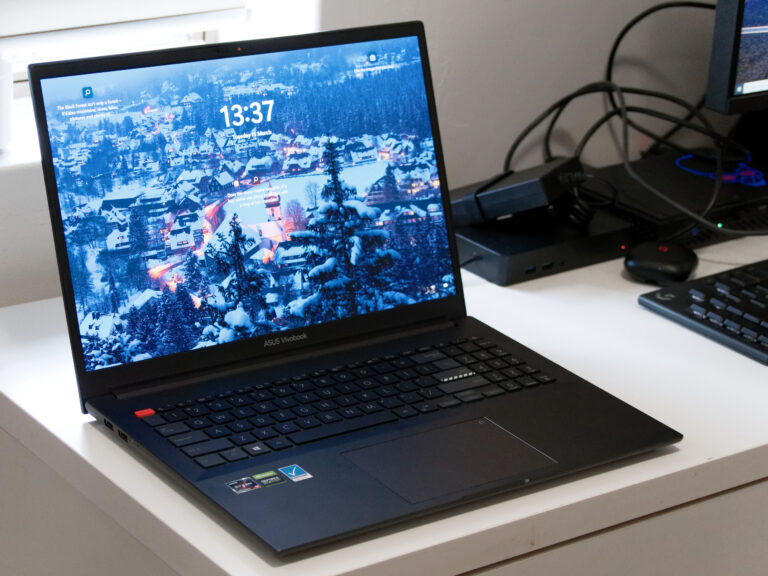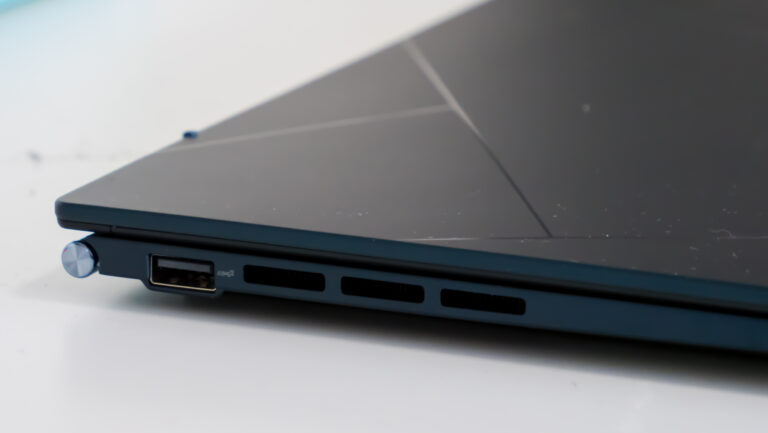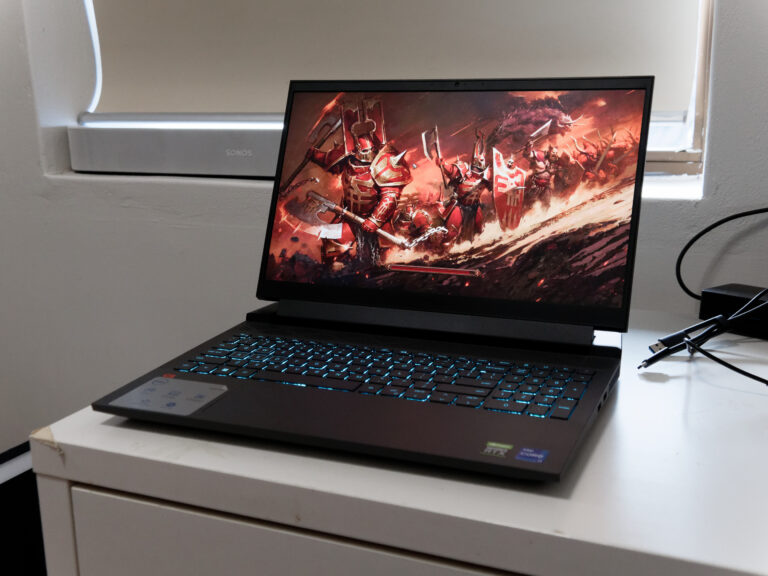Here are the big things we consider when reviewing laptops.
How we review laptops

When it comes to picking and choosing the best laptops available in Australia, we focus on more than just the specs.
It’s one thing for a laptop to have a nice design or the specs needed to provide a good everyday experience and another to try and quantify whether or not it provides the right performance at the current price. Our review process is as much about evaluating a product's strengths and weaknesses as it is delving into the commercial context in which it exists and identifying the audience it's trying to serve.
For that reason, our laptop review process usually starts with a focused investigation into the similarities that each brand already brings to the table. Where do the different laptop designs brought to market by hardware manufacturers like Lenovo, Dell, HP and ASUS differ, and why?
This helps give us a basis for what the laptop landscape looks like at any given time and get a sense of what consumers can expect and should be able to take for granted in any modern mobile PC.
The next phase in our analysis specifically looks into the details of the product we're reviewing. What fresh additions or interesting twists on the formula are there? Do they provide novelty or are they a necessary response to genuine consumer pains?
We then weigh these findings against the price expectations for the market segment attached to the category involved. The things that make a given laptop better for gaming count a lot more for the best gaming laptop than the best overall.
Likewise, when we're talking about the best cheap laptop or the best overall laptop we make a different set of assumptions. We take it as a given that you're looking to save money, but not looking to cut corners. This helps us determine which laptops are providing the best bang for your buck and value for money.
Here are the big things we consider when reviewing laptops.
Price
Price matters. Anyone can make an expensive laptop good. Making one that’s competitively priced and smart about the tradeoffs it makes is much harder.
Cheaper is always better. However, the degree to which that should affect our assessment of a given laptop does begin to shrink once it gets cheap enough. A $1500 laptop should be significantly easier to recommend over a $3000 one than a $500 should be to recommend over a $1000 machine.
Affordability is not a neutral part of the picture. Making something that meets the budget requirements of a target audience or market is just as important as making sure it has the necessary specifications or features.
Display
99% of the time you’re using a laptop, you’re going to be staring at the screen on it.
The details, advantages and disadvantages of that screen matter a lot because they directly affect the experience of everyday use.
For our purposes, more resolution is usually better. However, this privilege is complicated by a bevy of other display technologies. A lot of what makes a screen good or bad has to do with the underlying technology involved, and some users might prefer a more responsive display with a faster refresh rate over one that can boast 4K resolutions.
When we write about the display on a given laptop, we try our best to talk less about whether it is good and more about what it is good for. Every product has strengths and weaknesses. Our goal is to make it as easy as possible to tell whether those of a given PC are ones that you might be able to live with.
Design
Most modern laptops look pretty similar, but there’s a real knack to making one that stands out without coming across as novel or experimental.
Our assessment of a given laptop’s design is influenced partially by the personal preferences of the reviewer, but also by the features incorporated in that design. If most best-in-class laptops are opting for glass trackpads that feel nicer to use than traditional plastic ones, then the absence of the former represents something of a compromise.
Ports
Ports are a boring, but vital part of any laptop. They shape not only the soft limits of what you can do with a laptop out of the boxm but how those possibilities manifest. The more ports you start with, the fewer dongles and accessories you’ll need to buy after the fact.
We favour laptops with more ports, but we do factor in the average amount of ports for laptops of the same weight class. If a laptop has fewer ports than it probably should, we think that's something you'll want to know ahead of time.

Specs
The performance of any given laptop is nothing if not the sum of its parts.
While the degree to which each component can affect this performance varies, any weak link can act as a bottleneck in the right situations. Understanding how the components inside a laptop are structured is critical to understanding the value they offer.
As with ports, the other lens that informs our assessment of things like RAM, storage and processors is where the average sits.
Nobody starts looking for a laptop with a specific spec in mind. Their needs are broad, and so too are the solutions. That said, most consumers looking to buy a new laptop do so with the expectation or hope that it might last them. Buying above the average when it comes to RAM and storage is one way to increase the likelihood of that possibility.
When it comes to processors, we think of the CPUs made by AMD, Apple and Intel as similar in nature to NBN speed tiers. Based on how a laptop performs during our time with it and under select testing conditions, we categorise it into one of four tiers. Though broad, these tiers give some idea at a glance of what to expect when it comes to real-world performance.
Essential processors should be able to handle the basics: email, social media and some light web browsing. Gaming or more advanced tasks like image and video editing are likely off the table.
Everyday processors should be able to confidently meet basic performance requirements for most people. Email, social media and web browsing shouldn’t be a hassle, and while they aren’t able to handle graphically-demanding AAA releases, they should be able to run some indie or casual games. This is typically where Chromebooks top out.
Enthusiast processors should be able to easily exceed the minimum requirements of most users and be powerful enough to handle some AAA gaming, though not at the highest fidelity. That usually excludes most ARM processors.
Extreme processors should be able to do anything you can think of. Games should run at high frame rates on the highest possible settings, and multitasking shouldn’t be limited in any significant way.
In addition to the above categorisations, we also factor in whether or not a given processor is the latest generation from the manufacturer. We favour newer silicon over older, though there are exceptions to every rule.
Graphics
When it comes to graphical performance, there are a few factors we consider.
The first is the implementation: is the laptop relying on integrated or discrete graphics? As powerful as integrated graphics solutions like the one found in Apple’s latest silicon have become, the difference in GPU performance between a laptop with a discrete card and one without is still pretty significant.
Then, we factor in the amount of VRAM offered by the hardware in question. This is not a replacement for benchmarks, and can’t provide the same degree of precision when it comes to determining the level of performance that a laptop can offer. However, this can allow us to assess the broad capabilities of a given laptop when it comes to graphical grunt.

Battery Life
When it comes to discussing and evaluating the battery life of a given laptop, it is best to start by introducing any claims that the manufacturer has made about battery longevity. Then, by drawing on our individual and anecdotal experiences using the laptop, make a judgment on whether those claims reflect reality.
Essentially, we’re trying to tease out the answer to the question of whether you can make it through a regular workday on a single charge.
The other stats we use for battery life comparisons are the amount of time it takes for video streaming via YouTube or Netflix (over WiFi) to reduce a battery from 100% to zero and the amount of time it takes for a laptop to charge back up again.
Conclusion
Our final conclusion for any laptop review tries to provide helpful and digestible answers to the following questions:
- Does the laptop meet the requirements of our recommended specifications for the price?
- Does the laptop justify the recommended retail price?
- If not, what are some alternatives that consumers should consider?
- Would we recommend this laptop to others?
- If so, are there any strings attached to that endorsement?
Related Articles




